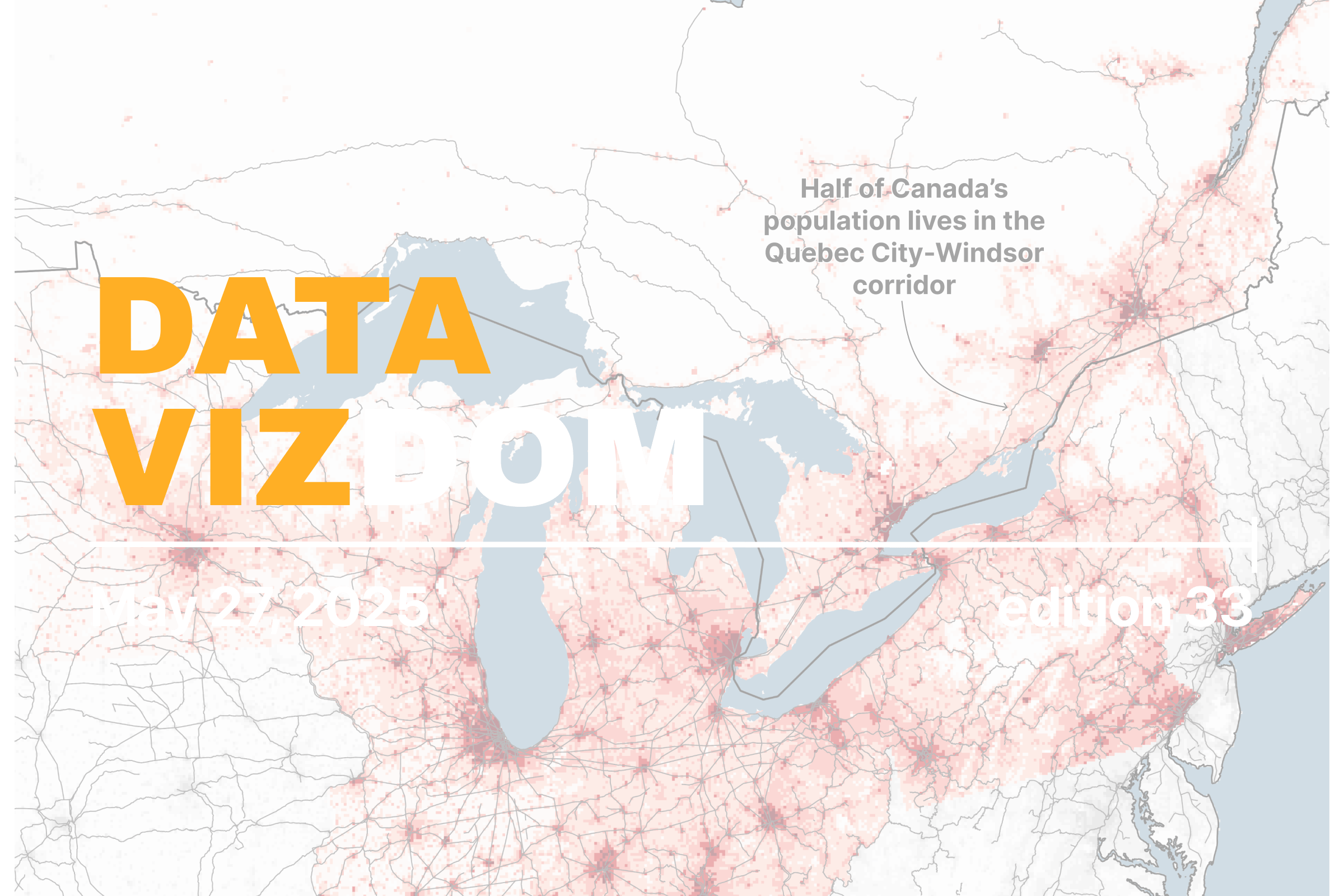With federal and provincial governments making concerted efforts to reduce domestic regulatory barriers to trade, Canada’s vast geography, particularly the distance between major population centres, remains a structural barrier. In Statistics Canada’s survey on interprovincial trade, businesses identified transportation costs, the distance between origin and destination, and delays between placing and receiving orders as the biggest obstacles to domestic trade.
Strategic investments in road and rail infrastructure can help mitigate these challenges while also improving access to eastern and western ports that move Canadian goods to global markets.
On the Canadian side of the Great Lakes and St. Lawrence region, about half of the country’s population lives along the Quebec City to Windsor corridor. This contrasts sharply with the American side, where population is more dispersed and mid-sized cities are more common outside the largest urban centres. Rail infrastructure is also denser in the U.S. portion of the region than in Quebec and Ontario.

The lack of multiple rail corridors serving the Greater Toronto and Greater Montreal areas puts significant strain on limited infrastructure, which is shared between freight and passenger traffic. With few routing redundancies available, disruptions in a single segment can bring large portions of the network to a halt. While Ontario maintains crucial rail links to the western provinces, facilitating the movement of bulk commodities to export hubs like the Port of Montreal and Great Lakes ports, intra-regional connectivity remains limited.
These structural limitations create a cost environment that Canadian firms have little control over. Unlike denser countries, where supply chains benefit from shorter distances and higher service frequency, Canadian firms have to absorb larger per-unit transport costs. This erodes price competitiveness, particularly for lower-value goods, both in domestic and international markets.
Investments in infrastructure that improve interprovincial linkages, increase network redundancy, and strengthen connections to remote regions can help unlock the latent potential of Canada’s internal market. A more connected and resilient transportation system would not only lower costs but also broaden market access for firms across the country. A better-integrated Canada can compete more effectively abroad while growing stronger at home.
What better way to understand concepts big and small than through data visualizations? In this blog series, we explore timely themes in economics and transportation, drawing on data from the SLGL dataHub.
